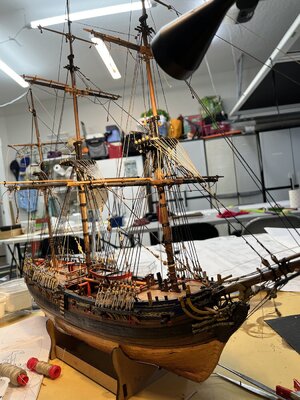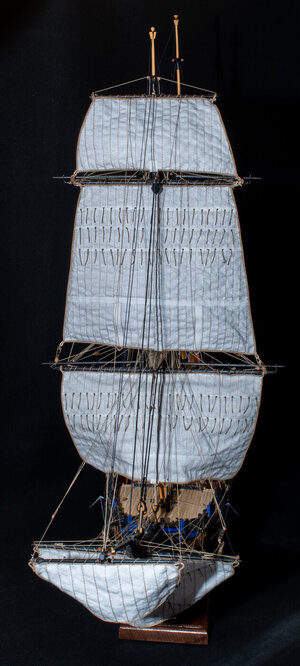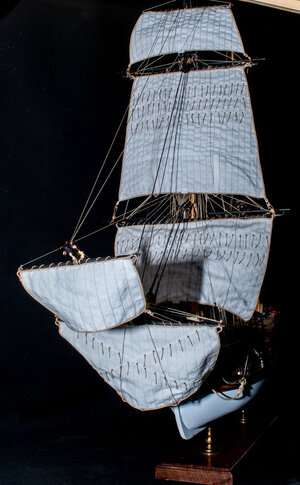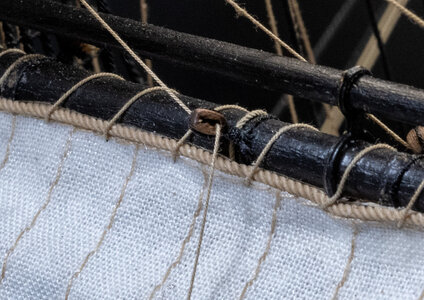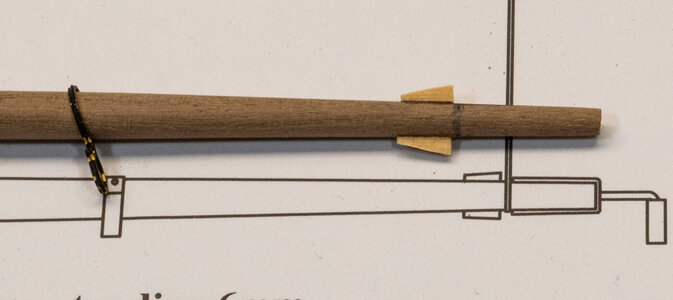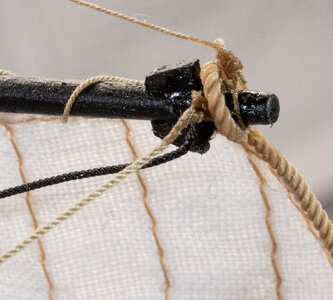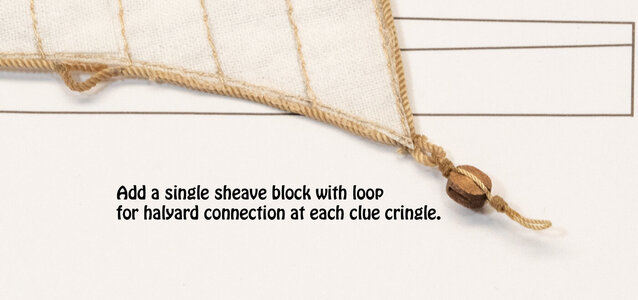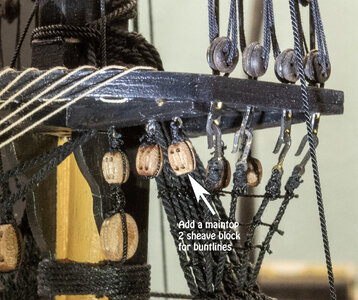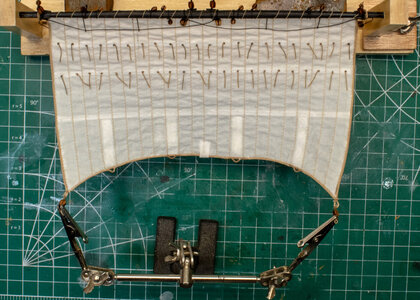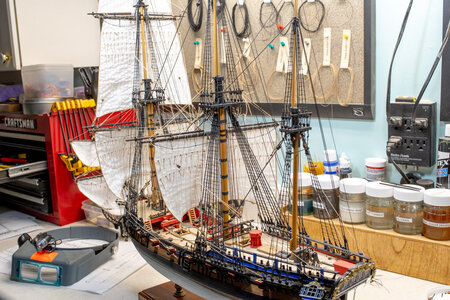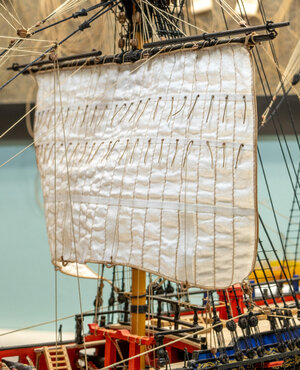I'm starting on the main course and think I may be getting a little more proficient at sail installation. Here are a couple of hints for the beginner like me. First I drill the holes for the ends of the spar for stunsail boom hardware and also the foot ropes. Easier to drill when the dowel is not tapered. Next drill a hole through the center of the spar, fore and aft, and mast to anchor the spar exactly where I want it when I do the install. I use head pins from the jewelry department at the local HobbyLobby. They are cheap and work well for all sorts of stuff. After tapering the spar as per the plans, put the inboard hardware on the spar for the stunsail boom. I didn't do that when I started and had to sand all the spars end stops off and start over because the hardware didn't fit over the stops, at least I think they are called stops. Next I installed the stops 5mm more inboard on the spar to make room for the extra lines rigging the sails require. Time for some paint.
View attachment 378109
You can see the 5mm extra space for the stops and the stunsail hardware inboard of them. Can't believe I did that twice.
View attachment 378110
What happens when you don't have the extra space. A rats nest.
View attachment 378111
Much neater when you have the space to attach the extra rigging for the sails.
